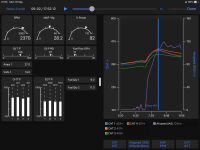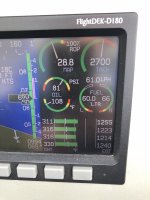Hi.
I have been getting high cats during takeoff and the fuel flow indicates 15.8 gph. During the cruise the chts are fine and I've seen other threads stating similar results.
The engine is an IO360 with an RSA-5 vertical induction and Vans fab setup. I have been wondering if the problem may be caused by the airflow into the servo being too turbulent as it is not ducted or corrected in any way inside the fab, its basically a flat plate bolted to the bottom of the servo. This could then cause the impact tubes to read incorrectly thereby altering the mixture and making he engine run lean on wot.
Would a small trumpet or intake duct inside the fab help?
Thanks
I have been getting high cats during takeoff and the fuel flow indicates 15.8 gph. During the cruise the chts are fine and I've seen other threads stating similar results.
The engine is an IO360 with an RSA-5 vertical induction and Vans fab setup. I have been wondering if the problem may be caused by the airflow into the servo being too turbulent as it is not ducted or corrected in any way inside the fab, its basically a flat plate bolted to the bottom of the servo. This could then cause the impact tubes to read incorrectly thereby altering the mixture and making he engine run lean on wot.
Would a small trumpet or intake duct inside the fab help?
Thanks







